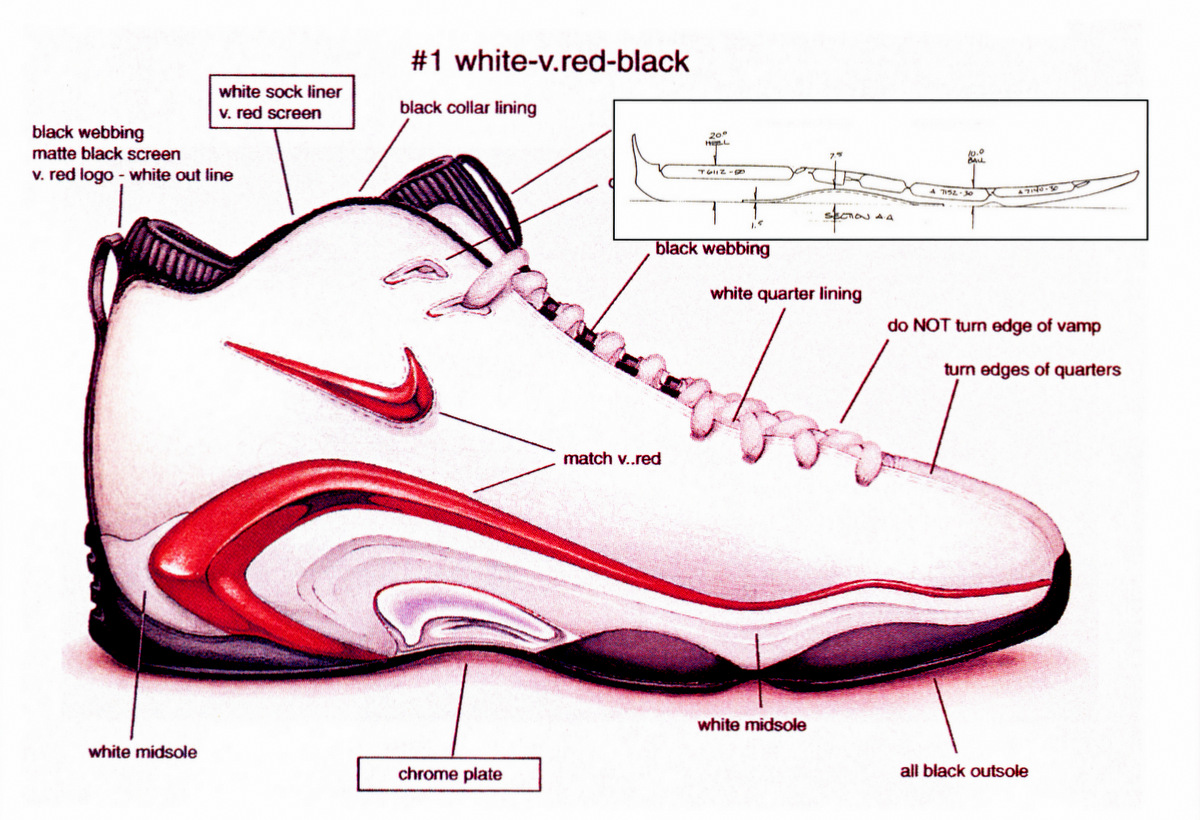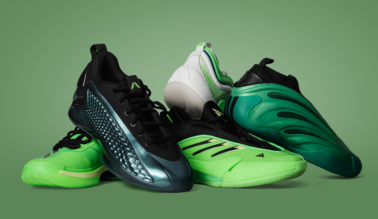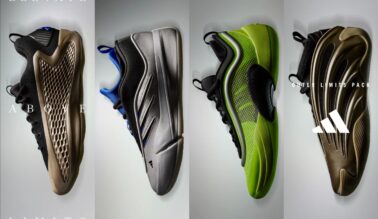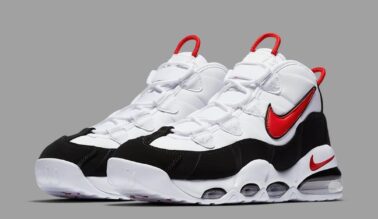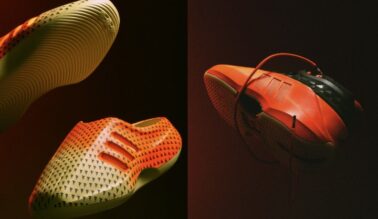This post may contain affiliate links. Please read our disclosure policy.
words // Nick DePaula:
During the late 1990’s, there was a distinct trend permeating into footwear design across the industry. As players throughout the league began to lead their own signature sneakers, designers looked to dive deeper into their personal stories, and would often pull cues and attributes from their style of play, personalities, upbringing and even objects of desire.
For any superstar player during that era, one of many off-court hobbies they were into was cars. This was just before every draft pick was tricking out a monstrous Escalade, Navigator or H2 — players of the 90’s were into sleek sports cars and classic cars.
In designer Tinker Hatfield’s mind, Michael Jordan represented the careening explosiveness, speed and power of a Ferrari. We’d see elements of the 550 M later on incorporated directly into the Air Jordan XIV’s design, whether it be the sloping silhouette, midsole wedges for support, or even the more overt “break lights.”
As Scottie Pippen was venturing into the process of creating his second Nike signature shoe for the 97-98 season, designer Aaron Cooper wanted to improve upon the Pippen 1, learn more about his preferences, and reflect more of Scottie’s smooth and flowing on-court style into the sophomore shoe. He’d also look to the world of automobiles for some influence.
“Pippen didn’t like the first shoe with the big Air,” Cooper flatly admitted to SLAM Magazine just as the 2 was launching.
After Pippen wore the Air More Uptempo, a full-length Air Max sneaker, for the 1996 NBA Finals, Cooper pulled from that shoe in creating the Pippen 1 for the very next year. The only problem was he’d have less time than usual to incorporate Scottie’s feedback into the design of the shoe.
“It was my first meeting ever with him,” Coop recalls. “I’m showing him everything I’ve heard from internal Nike folks of what he wants. I show him [full-length Air] — ‘This is the technology that you like,’ and he goes ‘I don’t want that.'”
“I was never a Max Air guy and always wanted to play closer to the floor,” Scottie specified to me. “As long as they gave me Zoom Air, I was happy.”
While Scottie indeed would wear the Air Pippen 1 for most of the 1996-97 season, Cooper also created a custom version in his size 16. The Air was gone, with his preferred cushioning platform in place for the second half of the year.
above: 1951 Chevy Mercury Coupe
“He wore Michael’s shoes and said, ‘That’s what I want. I want the Zoom Air.’ So we took the big Air out and got him into Zoom Air,” says Cooper.
With that insight and tech preference in mind, the process of crafting Scottie’s second shoe not only started earlier, but Cooper also had a better idea of how to personify Pip in the design.
Most notably, he turned to car design for inspiration. If MJ was a modern sports car, like a Ferrari, Cooper looked at Pippen as a clean and classic coupe. Specifically, he pulled from a 1951 Chevrolet Mercury Coupe.
“The Pippen II was a completely different experience than the I,” continues Coop. “When he saw the ’51 Mercury that I designed it after and some of the other inspiration points, he just kicked back and just started smiling. He hadn’t even seen the shoe yet. He was like, ‘Cool. You got it. That’s exactly it. That’s me.'”
The direction of the 2’s design language would go on to be seen in all of Pippen’s signature shoes. There was a rich leather or unique textile upper, and one key element that stood out. In this case, the midsole’s Chevyesque chrome jewel offered up a unique colorblock for the shoe.
It stood as the hero of the shoe when accented in color atop a white upper, or it could blend in with the upper in executions where the midsole was contrasted, like on Pip’s Black / White edition. More than anything, it was also a key support element for Scottie’s calm yet striking game.
“That jewel is probably a very good portion of the cost of the shoe, but it’s not just there because it looks cool,” confirms Coop. “It’s there to add stability to the footbed. It gives the product more support.”
As you’ll notice below, Cooper also layered in a few subtle cues for that signature touch, along with incredibly detailed construction and material call-outs. The top two eyelets took their shape from the door handles of classic 50’s cars. Both the sockliner and outsole of the shoe featured Scottie’s signature, and there were also three indented lines at each heel of the shoe, a lowkey nod to his jersey #33.
“He was great at finding out all of the little things that he felt would be able to add towards the personality of the shoe,” compliments Pippen.
With more insight from Scottie himself and a more inspired backstory for the shoe’s look, the 2 is often thought of all these years later as the hallmark Pippen signature design. Check out Aaron Cooper’s incredible final sketch for the Air Pippen 2 below, in our latest Sneaker Sketch of the Week.
